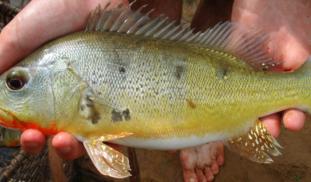Please wait...
About This Project
Over half of all vertebrate species on Earth are fishes found in South and Central America. Why? We think that adaptation to extreme environments and hybridization both play major roles, and often feed each other. We want to use next-generation DNA technology to probe the genomes of natural hybrids of peacock bass fishes adapted to extreme environments. Understanding these processes is critical for conserving Amazon biodiversity.

Browse Other Projects on Experiment
Related Projects
How do polar bears stay healthy on the world's worst diet?
Polar bears survive almost entirely on seal fat. Yet unlike humans who eat high-fat diets, polar bears never...
Uncovering hidden insect diversity associated with a likely undescribed gall-forming midge
Does a likely undescribed species of gall-forming midge (pers. comm. Ray Gagné) on Eriodictyon plants (Yerba...
Macrofungi of the California archipelago
The eight islands of the California Archipelago are a well-studied biodiversity hotspot — but we know almost...


